Liver Cirrhosis
What is cirrhosis?
Cirrhosis is a kind of common chronic liver disease and may be caused by one or more diseases that damage liver for quite a long time. Liver often occur progressive, diffuse or fibrous lesions, and in detail, it manifests as diffuse necrosis of liver cells, followed by fibroplasias and nodule-like regeneration of liver cancer. If the three lesions alternate with each other repeatedly, then the structure of liver lobules and channels of blood circulation would be gradually changed, further lead to liver deformation or callous liver, and even cirrhosis.
According to the statistics submitted to WHO by 55 countries, it was said that there were over 310,000 people died of cirrhosis around the world each year. In recent years, the number has increased to 500,000. In Western Europe and America, the number of people who died of cirrhosis is just proceeded by the number of people who died of malignant tumor, cardiovascular diseases, cerebrovascular diseases and unexpected accidents, ranking the fifth. The onset age of the disease is commonly among 21 to 50 years old, which accounts for about 85 percent, while the ratio of male to female is about 4 ~ 8:1, and the most prominent crowd that suffer from cirrhosis are the middle-aged men.
What are the causes of cirrhosis?
There are many causes for cirrhosis, among which the most common one is viral hepatitis, for example, hepatitis B, hepatitis C. Besides, there are also other long-term factors that may cause cirrhosis like alcoholic liver, fatty liver, cholestasis, drugs, nutrient and so on.
1. Viral hepatitis: currently viral hepatitis, especially hepatitis B, is the main cause for portal vein cirrhosis in Southeast Asia countries.
2. Alcoholism: long-term alcohol drinking for a large amount, is one of the factors that cause cirrhosis. It is believed that alcohol has direct toxic effects on liver and can seriously damage liver cells.
3. Nutritional disturbance: most scholars admit that malnutrition would decrease the resistance of liver cancer on toxic substances or infective virus, so that this contributes to cirrhosis indirectly.
4. Industrial poisons or drugs: long term or repeated exposure to certain industrial poisons, or long-term use of certain drugs, can produce toxic or drug-induced hepatitis, which further lead to cirrhosis.
5. Circulation disturbance: chronic congestive heart failure, chronic constrictive pericarditis can cause long-term intrahepatic congestion and hypoxia so that further cause liver cell necrosis and fibrosis, known as congestive cirrhosis or cardiac cirrhosis as well.
6. Dysbolism.
7. Cholestasis: when extrahepatic bile duct obstruction or intrahepatic cholestasis happens, high concentration of bilirubin can damage the liver cells, while long-term cholestasis can cause cirrhosis.
8. Schistosomiasis: if infected with schistosomiasis, the eggs of worm in the portal area stimulate connective tissue to proliferate, so that causes schistosomiasis-induced liver fibrosis. This may further lead to significant portal hypertension, also known as schistosomiasis-induced cirrhosis.
9. Unknown origin: partial cirrhosis happen without definite causes, this is called cryptogenic cirrhosis.
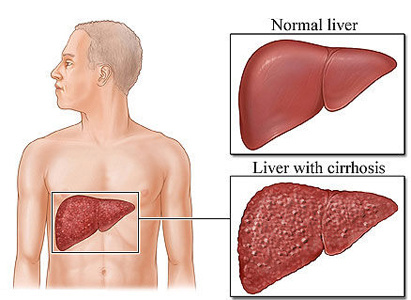
The symptoms of cirrhosis
Because in clinical liver has strong decompensated function in early stage, so there is no obvious symptoms; while due to multiple systems being affected by liver failure, the most commonly seen are hepatic dysfunction and portal hypertension; sometimes, some serious complications like alimentary tract hemorrhage, hepatic encephalopathy, secondary infection, or canceration may be caused.
Early symptoms of cirrhosis
1. Loss of appetite: it is the most common symptom in the early stage of cirrhosis, sometimes accompanied by nausea, vomiting. This is mostly due to gastrointestinal congestion, dysfunction of gastrointestinal secretion and absorption caused by cirrhosis.
2. Weight loss: it is common symptom in the early stage of cirrhosis, because loss of appetite, insufficient food-intake, dysfunction of gastrointestinal digestion and absorption, so the body albumin synthesis decrease.
3. Fatigue: as one of the early symptoms, it would become increasingly worse until severe fatigue and is consistent with the degree of liver disease’s activity.
Symptoms of cirrhosis in advanced stage
1. Endocrine disturbance: when in advanced stage of cirrhosis, liver function decline becomes more and more obvious, in the end, this would directly lead to decrease of estrogen inactivation, increase of estrogen secretion, so that there are large amount of estrogen in blood, and the suppression phenomenon of androgen would also be caused.
2. Symptoms of digestive tracts: it generally manifests as poor nutritional status, significantly decreased appetite. Patients may feel abdominal discomfort and fullness after eating, or suffer from nausea and even vomiting; if in advanced stage, patients have poor tolerance to fat and protein, and diarrhea can be easily caused after eating greasy food; patients would feel unbearable abdominal distension due to ascites and gastrointestinal pneumatosis, even suffer from toxic intestinal tympanites.
3. Bleeding tendency and anaemia: advanced cirrhosis often has symptoms like epistaxis, gingival bleeding, ecchymosis on skin, excessive skin, gastrointestinal mucosal erosion and bleeding, nasal bleeding, hematemesis and melena. Besides these symptoms, women would often suffer from menorrhagia.
4. Cirrhosis ascites: in the advanced stage of cirrhosis, abdominal distension often appears before ascites. Large amount of ascites cause abdominal bulge, abdominal wall tautness, and these make patients’ abdomens look like frog abdomens and cause them difficult to walk.
5. Portal hypertension: it manifests as esophageal varices, splenomegaly and ascites, in which esophageal varices are the most dangerous. It is easy to cause digestive tracts bleeding because wall of varicose veins is thin and easily ruptures.
6. Systemic symptoms: fatigue is one of symptoms of cirrhosis in advanced stage; often patient’s skin becomes rough and dry, and they are also in dark complexion.
What methods can be applied for diagnosis?
Imaging examinations: B ultrasound of liver, gallbladder and spleen. B ultrasound of liver is a good reference for degree of cirrhosis, and can also be taken into consider with the increase degree of alpha-fetoprotein. This is also an important method for detecting malignant tumor of liver.
Etiological examination: etiological examination includes two hepatitis B markers examination and HBVDNA. If hepatitis B virus surface antigen of a person is positive, it means the person is a carrier of hepatitis B virus.
Liver function: the examination of liver function can tell the severity of cirrhosis.
Liver fibrosis examination (4 items): liver fibrosis is a stage when a chronic liver disease develops into cirrhosis. Examination of liver fibrosis (4 items) is so helpful for early detection and treatment of cirrhosis. It is very important for liver fibrosis not being developed into cirrhosis.
Liver biopsy: liver biopsy can definitely diagnose liver cirrhosis.
Laparoscopy: it can directly observe liver, spleen and other abdominal organs or tissues, and can also draw tissue for biopsy under the circumstance of direct vision, so it is valuable for persons whose diagnosis has difficulties.
Cirrhosis is a kind of manifest that reveals lesion of liver, so if daily attention and care have not been paid to this, it may develops into liver cancer and threatens life. In a word, examinations of cirrhosis are very important.
Treatment methods of cirrhosis:
1. General treatments:
(1) Rest: people with decompensated liver function should appropriately reduce activities to certain degree. Decompensated patients should rest in bed.
(2) Diet: it is favorable to choose delicious high-calorie, high protein and vitamin-rich food.
(3) Supportive therapy.
2. TCM: TCM has a long history on cirrhosis treatment. TCM has the function of relieving the depressed liver, promoting blood circulation to remove stagnation for cirrhosis patient. It also plays a significant role in alleviating clinical symptoms and avoiding liver fibrosis.
Specific treatment methods for cirrhosis
Stem cell transplantation is not only a cell therapy technology but also a high efficient technology for treating cirrhosis. It firstly applies stem cell separator to collect and separate peripheral blood or bone marrow blood stem cells, and then puts them in sterile cell laboratory for purification, separation, identification and culture; finally, stem cells shall be transfused via hepatic artery into liver through suspension transfusion methods; when stem cells have been transfused into patients’ liver tissues, they would differentiate into liver cells to replace the formal liver cells that have been faded away or undergone necrosis due to inflammation injury, viral damage, so that restore liver function and achieve therapeutic effects.
Advantages of Stem Cell Therapy for Cirrhosis
Stem cell transplantation has the advantages of low risk, immediate effectiveness, few pain, good efficacy, etc. Compared with liver transplantation therapy or drug therapy, stem cell transplantation highlights its advantage of biotechnology. Stem cell therapy will not bring any side effects with low immunity and rarely develops immunologic rejection. Long-term medication will cause disease’s resistance to the drugs and put extra pressure on the liver. Once patient stops medication, it is life-threatening. Liver transplantation is to put another liver to the patient’s body, which is risky and may develop immunologic rejection. During the operation, surgical complications are possible including excessive bleeding or infection, etc.
What kinds of supports can be obtained?
Practice proves that the clinic team services composed by multiple disciplines like oncosurgery, oncology, pathology, imageology and anesthesia doctors as well as professional nurses, can provide patients with most effective, most suitable and most economic treatment plan, and also can greatly improve the therapeutic effect of treating cancer patients.
“One station” medical system constructed by Modern Cancer Hospital Guangzhou combining multiple disciplines, can perform comprehensive diagnosis and treatment for patients under the condition of without adding patients’ burden. Therefore, on one hand, it can provide all-round and heartfelt medical services, and on the other hand, it improves medical efficiency and level. There are many channels can be applied to conduct the communication between patients and doctors, like online consultation, email, telephone conversation, and face-to-face consultation. All these consultation services can effectively help patients to fight the cancer. While the medical team faced by the patients includes doctors, nurses, dietitians, interpreters and so on to meet various demands in different level of different countries. Patients would be more confident under the unobstructed communication environment to cooperate the hospital to diagnose and treat the diseases.
-
 Cryotherapy...
Cryotherapy...
Cryotherapy freezes tumor by the temperature of 120℃~ 165℃ below zero in a dozen of seconds and turn into ice ball. The tumor inside ice ball is trapped in a "starving and extre...more>>
-
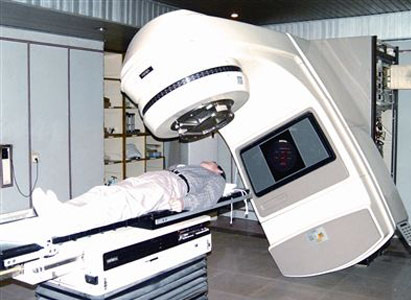 Radiation Therapy...
Radiation Therapy...
Radiation therapy or radiotherapy is a therapy using ionizing radiation, generally as part of cancer treatment to control or kill malignant cells, which can be divided into systemic...more>>
-
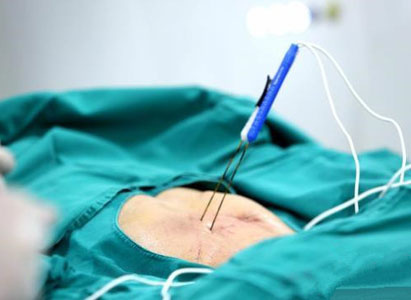 Introduction of Nanoknife Techn...
Introduction of Nanoknife Techn...
Nanoknife is a brand-new cutting-edge ablation technology for tumor treatment. It breaks the membrane of tumor cells with high voltage pulses from electrode probes, resulting in mul...more>>
-
 Successful case of nanoknife ab...
Successful case of nanoknife ab...
Modern Cancer Hospital Guangzhou successfully completed a case of nanoknife which was performed under CT guide and general anesthesia to ablate pancreatic cancer....more>>
-
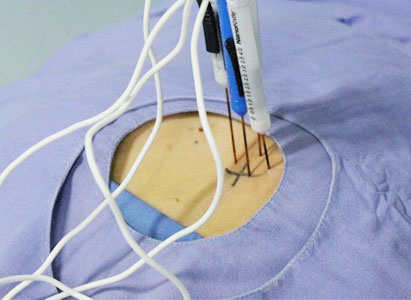 Nanoknife:safety and quick re...
Nanoknife:safety and quick re...
Nanoknife is the latest, most advanced cancer treatment. Nanoknife is suitable for pancreatic cancer treatment, which can raise the survival rate to more than 2 times for them....more>>
-
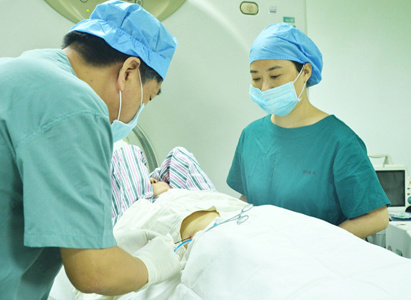 The Latest Direction of Tumor T...
The Latest Direction of Tumor T...
Microwave ablation (MWA) is a form of minimally invasive physical therapy with the highest inactivation rate at present. It is used in interventional radiology to treat cancer in Mo...more>>
-
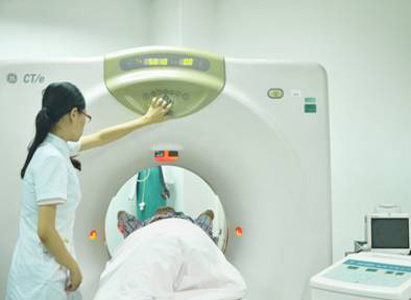 Microwave Ablation (MWA): Opene...
Microwave Ablation (MWA): Opene...
Microwave ablation (MWA) is a form of minimally invasive physical therapy with the highest inactivation rate at present. It is used in interventional radiology to treat cancer in Mo...more>>
-
 Cryotherapy and Lung Cancer...
Cryotherapy and Lung Cancer...
Currently, the traditional treatments available for lung cancer are surgery, chemotherapy and radiotherapy. However, with the advancement in the medical technologies, minimally inva...more>>
-
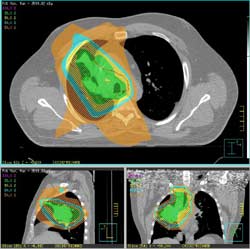 Photon Knife/3D Conformal Radia...
Photon Knife/3D Conformal Radia...
Photon Knife uses the targeting information to focus precisely on the tumor, while avoiding the healthy surrounding tissue. This exact targeting are more effective in shrinking and ...more>>
-
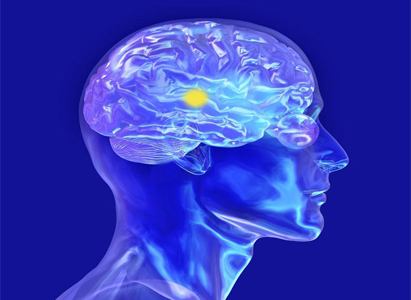 New combination therapy for bra...
New combination therapy for bra...
The new method developed by Modern Cancer Hospital Guangzhou to treat brain tumor: photon knife + targeted therapy, if combined with traditional Chinese medicine immunity, can effec...more>>
-
 Interventional Therapy:Starves ...
Interventional Therapy:Starves ...
What is interventional therapy? Interventional therapy is a mini-invasive therapy that under the guidance of medical image equipment. It mainly has two categories: vascular interven...more>>
-
 Green Chemotherapy...
Green Chemotherapy...
MCHG modified conventional chemotherapy with means, minimizing its side effects while maximizing the efficacy. With the advantages of reduce side effects greatly, those chemotherapi...more>>
Q&A Portion
- Question:Doc, I want to ask particle implantation, I was diagnosed breast cancer last year.
- Answer:Particle implantation is to implant the radioactive particles inside the tumor by percutaneous puncture. The radiation releases from the particle can constantly kill the tumor cells without hurting other organs or tissues around tumor. Actually it is an internal radiotherapy with less side effects and small complications. That is depending on individual condition. We need to study your case first then we can know if this treatment is the best for you. You can send us your medical reports, records, imaging materials like CT scans, MRI etc. for our specialist team study first. Then we would offer you the treatment plan accordingly.




